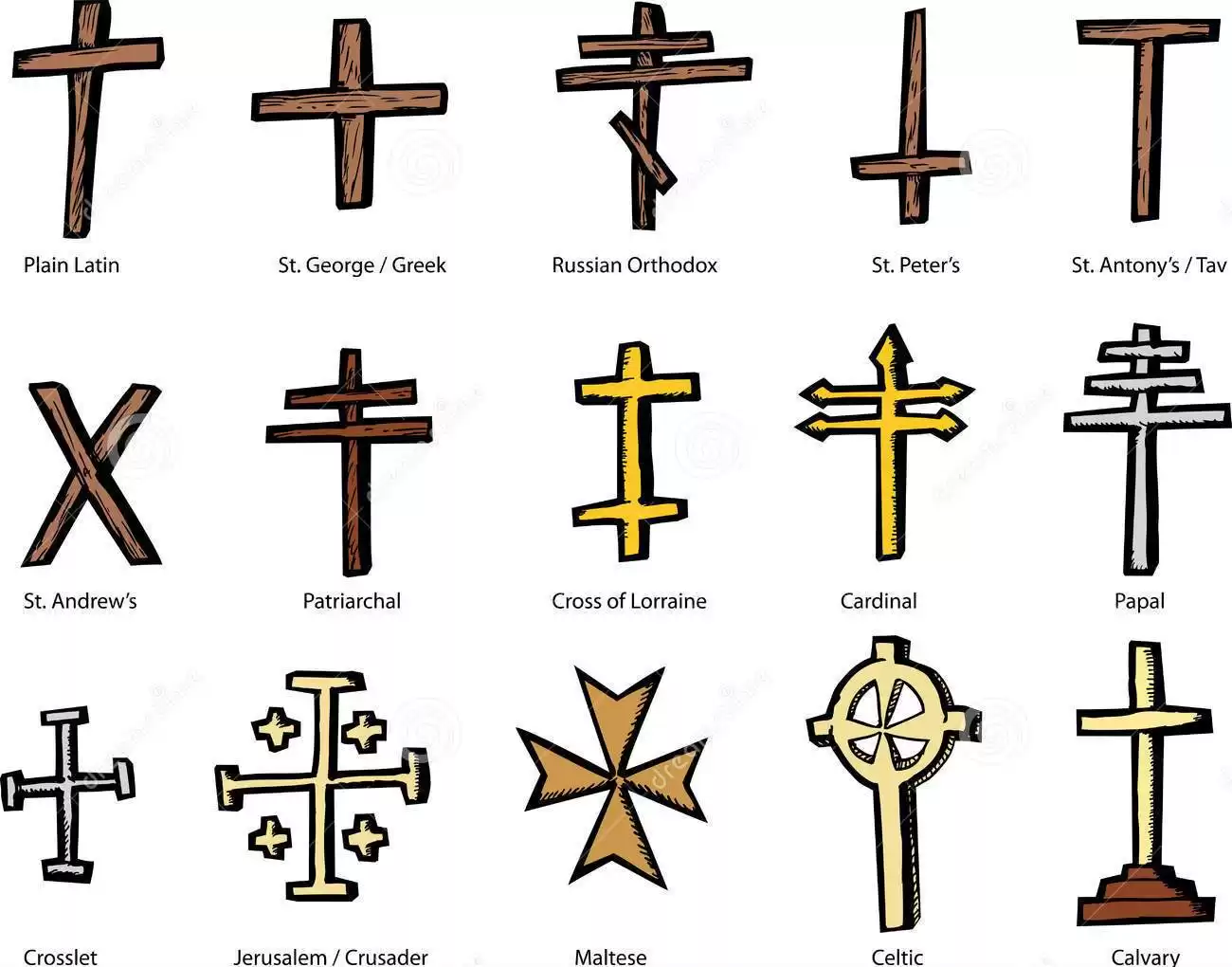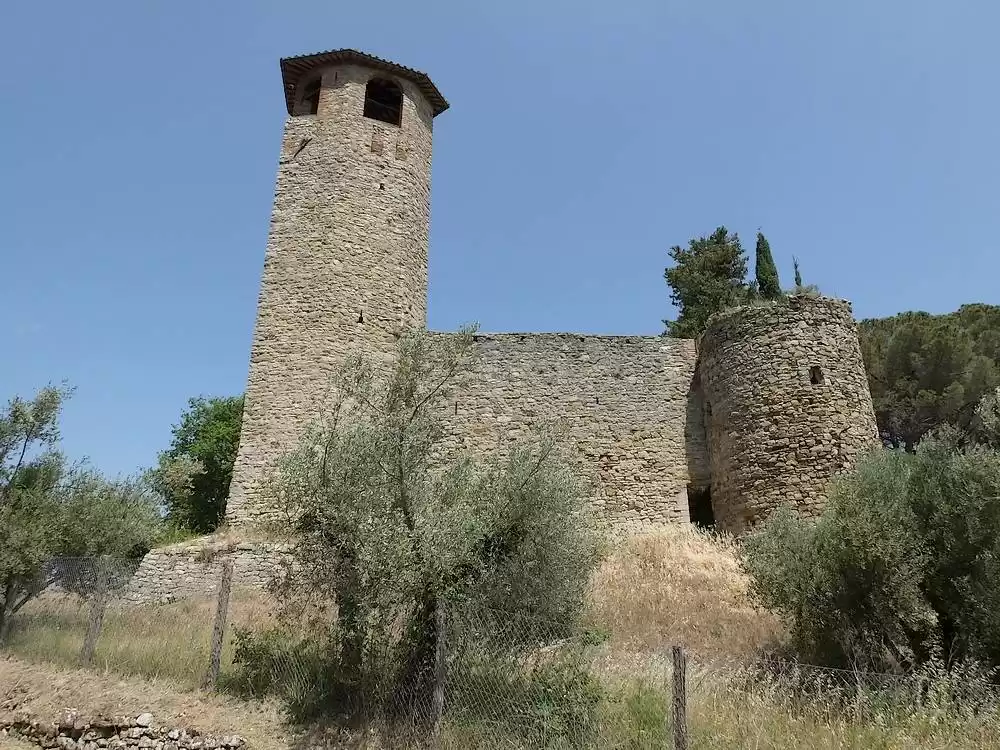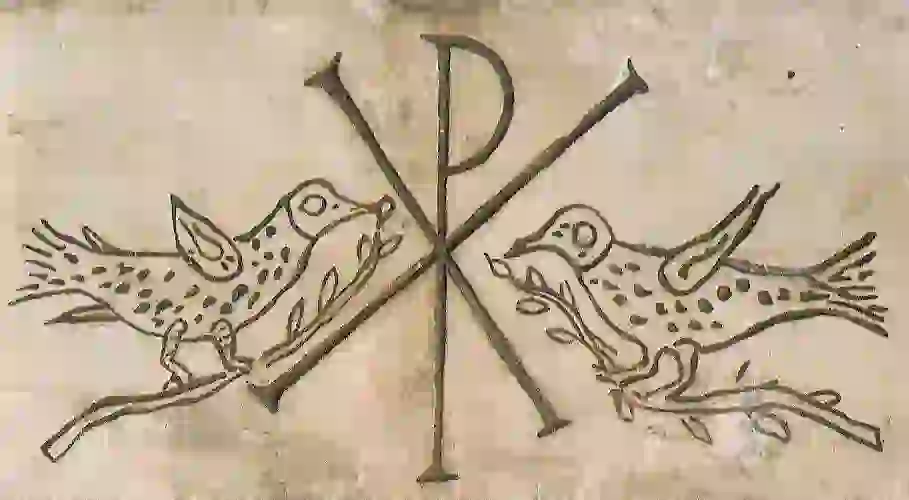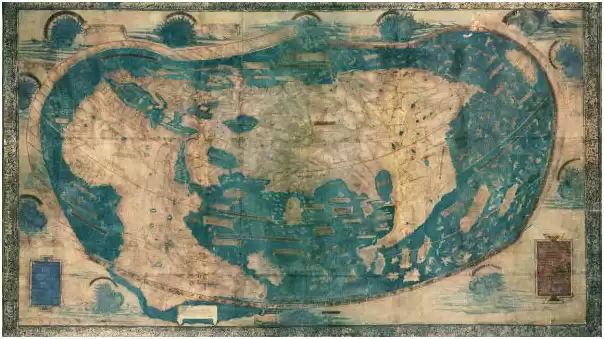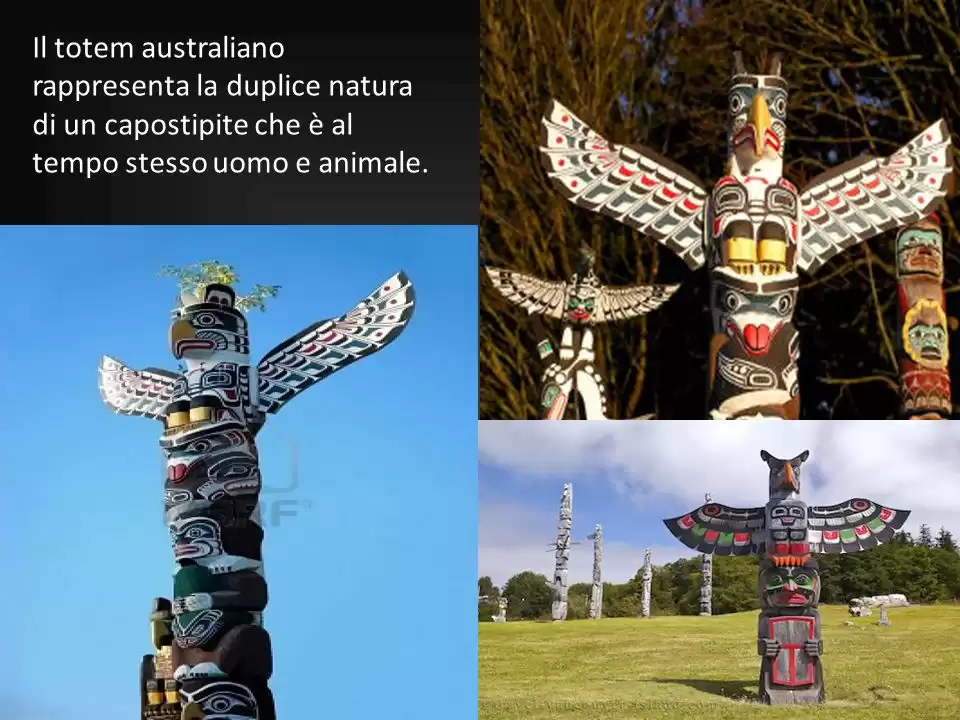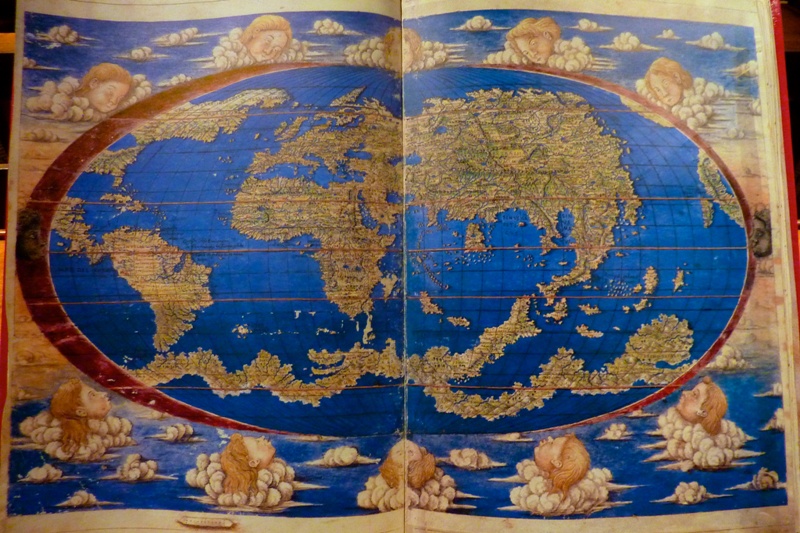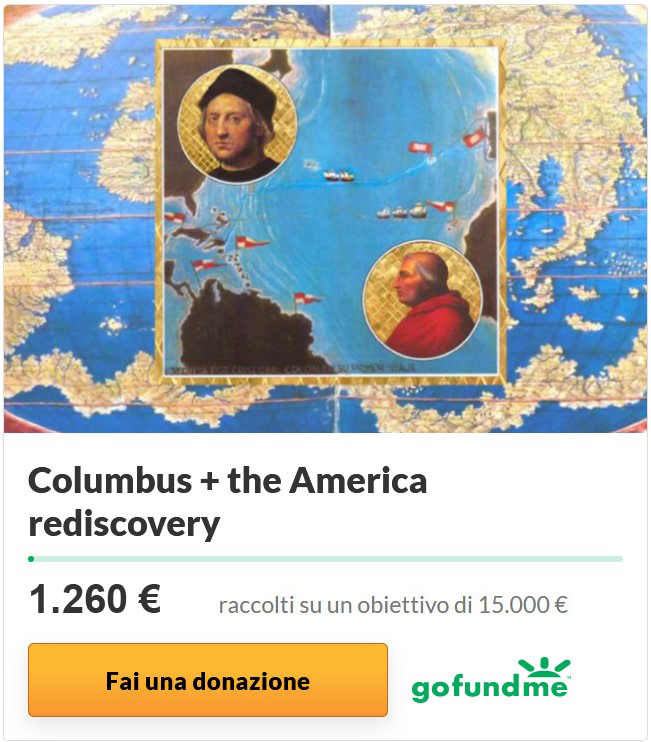Last week I had the distinguished honor to sit down with Ruggero Marino, who for more than 30 years worked as journalist and cultural editor at il Tempo, one of the leading newspapers here at Rome: to discuss one of my favorite historical figures, the great Italian Discoverer, Christopher Colombus. To know more about Ruggero Marino, see the short bio, at the end of this article.
Christopher Colombus, himself, was not a simple man. His origins, thought, motivations, accomplishments, goals, trials, sufferings, victories and defeats have been examined and re-examined for more than 500 years, by countless scholars and investigators. Who this man really was and what he achieved are still greatly misunderstood and underestimated.
During his professional career Ruggero Marino has won numerous journalistic and cultural awards for his books and publications, which range from a journal on Poetry, to the children of Italy, in addition to 5 on Columbus himself. Finally, he is an honorary member of the Pontificia Accademia Tiberina, the Accademico onorario belliano and a Cavaliere ad honorem del V.E.O.S.P.S.S..
I interviewed Ruggero Marino in his home, which is more like an art gallery, and indeed reflects the spirit of a man who collects truth and beauty wherever he finds it, like the great explorers of the Victorian Age did, but with a distinctively Italian, and one might say, Renaissance flair.
For this reason, when I came to know of the publication of his new book, “Dante, Colombo e la fine del mondo“, I eagerly sought out and was granted an interview with one of the leading authors of Columbus, here at Rome. What follows is my interview conducted in writing, which I have translated into English, for you my readers. Above, you can find my video interview with Ruggero at his home, in Italian, which covers the same material but adds several other questions, which an Italian audience will find of interest. At the end of this English version, I will append the original Italian text.
Br. Bugnolo’s INTERVIEW with Ruggero Marino
Author of, “Dante, Colombo e la fine del mondo”
Q. What motivated you to write not one, but four books about Christopher Columbus, the most famous navigator and maritime explorer in the history of the world?
A. It was the proverbial side-track, confronted as I was with a true mystery: a letter to the Editor which gave me strange leads. Since then, I have been fighting for over 30 years for a radical historical revision of the events of Columbus and the “disappeared” pope, the “Genoese” Innocent VIII: known in life as, Giovanni Battista Cybo (1484-1492), who was struck by “damnatio memoriae” and canceled out by his successor, the infamous Borgia: the Spaniard, Alexander VI, who gave everything to the Spaniards. I have written 5 books, one translated in six countries: America, Canada, Spain, Portugal, Romania, the Czech Republic and Poland. I also created a website ruggeromarino-cristoforocolombo.com for which, after many sacrifices, I am also looking for financial aid and now the latest effort “Dante, Colombo and the end of the world” is coming out.
Q. A multitude of books have been written on Colombus. What makes your approach to Columbus unique compared to everything that has been written up to now?
A. Virtually all of my research is an authentic revolution compared to what has been handed down, in a story that, over the centuries, has become a sensational fakenews, which I consider a classic and damnable joke. The “Deus ex machina” of the discovery of America, willy-nilly, was in fact a Roman pontiff, Innocent VIII, on whose tomb in St. Peter — the only one transferred from the old Constantinian basilica to the new one — in the epigraph is written “Novi orbis suo aevo inventi gloria” or “In the time of his pontificate the glory of the discovery of a New World “. As confirmed by the Panvinio, Columbus’s sails were pushed by the wind of the Church of Rome. Revealing a fourth continent constituted a “heresy” with respect to the teachings of the Fathers of the Church and with respect to an ecumene as sacred as the Trinity: Europe, Asia and Africa. Only the Church could prepare and dispel the “trinitarian dogma” without repercussions for the Christian flock.
Q. Who was the man, Christopher Columbus?
A. A sentence, repeated several times by the navigator, would be enough to restore his perfect identikit and that is that “the Holy Spirit is present in Christians, Muslims, Jews and of any sect” and that his personal knowledge derived “from having read texts by Christians, Muslims, Jews and of any sect.” A universal man, the “Vitruvian man” of Leonardo da Vinci, the prophetic fulfillment and incarnation of Saint Christopher who brings the new man, the new Adam, the Child Jesus beyond the waters of the new red sea — in this case the ocean, the Atlantic, the dark sea. It is no coincidence that Las Casas, the contemporary “chronicler” of the Indies, says that Columbus was going to found the Church anew to “transfer Her all there”. And while the story of the four Colombian voyages is told to us like an adventure comic, the real painting and drawing were of a complexity, subtlety and perfection born of the Renaissance.
Q. One of the great mysteries consists of how Columbus could have arrived in what will be called the “New World” beyond the ocean. Was it chance, was it luck or something else?
A. Unfortunately, history says that Columbus went without knowing where he was going; that he landed without understanding where he had arrived; and that he died without ever having understood what he had “discovered”. A case of “serendipity”. — Pure idiocy! — And I am amazed that a lot of historians still spread it. Colombo knows everything, he goes precisely from point to point: you don’t bring mirrors and bells to trade with cultures like Japanese or Chinese.
Indeed, Japan had not yet been “discovered” at that time. Marco Polo’s Cipango, of which Columbus read and noted the “Million”, speaks of a land one year away from China (which in reality is very close) and where the flesh of enemies was eaten. The Chinese never managed to land in Japan, but Marco Polo speaks of 30,000 Chinese who landed following a shipwreck in Cipango. The ending in “ango” is not found in Japan, Mesoamerica is full of it. Cipango is clearly America already.
In the Vatican, in the library of Innocent VIII, there were the papers of the New World or a text that dated back to the library of Alexandria, as many witnesses of the time reveal. Papers that historians say that in the spring of 1492, Pinzon also saw, the very Spanish captain, who helped our Navigator find the caravels (which he would use in his first voyage — Editor’s note), but who betrayed him several times in view of the gold and who mysteriously died as soon as he returned.
Q. Columbus is accused of total administrative and political incapacity, but few men in their lives have shown the tenacity and genius in carrying out such a daring project and feat that everyone thought impossible. In your books about him, how does you deal with the question of how he was judged by history, then as now?
A. Columbus’ life was spent almost always at sea and very little on land, even after he arrived in the Caribbean. His complaints about the behavior of the Spaniards with respect to the Indians — Spaniards who behave “worse than savages” — are continuous. Those are his words. While his remarks are always admiring towards the natives. Less naturally for the “caniba”, the cannibals (the now extinct tribe of the Caribs — Editor’s note). Strong in that type of character which harkens back to the saying of St. Bernard of Clairvaux: he was “good with the good, bad with the bad”.
To judge Columbus with our modern mentality is a slavish idiocy. Columbus was a military man, a knight heir, even of Templar designs, such as the Cross on his sails: that which goes to the Indies is an “armada”. His expedition is likened to a crusade for the evangelization of new lands. Everything in the extreme West was catalogued as the Indies.
We must add a very apocalyptic expectation and perspective. Much more than in the year 1000. Everyone was convinced that the world would meet its end in about 150 years. The thought was, “We had to hurry to fulfill the prophecies with the conversion of the Jews, the subjugation of the Muslims and the gospel spread throughout the world completed.”
Q. In the course of your research, what have you discovered about the claims made in recent decades that accuse Columbus of being the “father” of the slave trade?
A. Again, it can be said that the most Christian of those who went to the Americas was Columbus. Slavery was condemned in the United States only towards the end of the nineteenth century, and it still exists today, but people prefer not to talk about it. Back then, slavery was not condemned by law. Muslims had slaves, Christians had slaves, even blacks traded in slaves. Perhaps in order to understand the mentality of the time, it would be sufficient to remember that Las Casas, the man of the church who defended the “Indians”, suggested replacing the natives, who were more fragile, with those who could come from Africa, who were stronger. After the first voyage, Columbus took on board a few Indians. From there, the trade began, so they say. However, what you are not told was that he did this to make them learn the Spanish language and then bring them back as interpreters. During the course of the voyage, there is a lull in the weather and food becomes scarce. The Spaniards encourage him to throw the Indians into the sea or even to eat them. Columbus opposes this, even risking his own life in the event of a mutiny with a rather unruly crew.
Q. Recent films portray Columbus as a free thinker who wanted to show that the worldview of the Catholic Church was rigid and closed. From your research, can you confirm or deny this, and explain why?
A. Columbus was a man of the Church. Of a Church that wanted to go back to its Christian roots. Together with a monk, he wrote “The Book of Prophecies”, a collection of psalms and prophecies about “new heavens and new earths”, from which some pages have been removed, and it seems that they also contained some references to the Koran. It is worth remembering that Columbus, when he was put in chains and in death, wore a habit like that of St. Francis and that he always accompanied the spiritual Franciscans of Rabida.
I myself have been a journalist and write books; perhaps more than my own, the words of two important pontiffs who tried to make Columbus a saint are worthwhile: Pius IX and Leo XIII. An impossible cause, since there are no more living witnesses, an “exceptional” cause for an “exceptional” man. Pius IX wrote: “It does no harm to try, when the documents are known…”. Leo XIII wrote an encyclical letter, a thing never done for someone who is not blessed, in which he stated, “Columbus is ours, what he did he did for the Church.” The cause for beatification, always opposed by Freemasonry, lies dormant in Vatican’s sloth. A pope from the end of the world would have a duty to redeem a “hero of the Church “who went to the end of the world” to plant the cross and is still recognized as a “servant of God.”
Q. Today, in many circles, what is important is not the historical documentation, but an instrumentalization for the use and consumption of today’s political interests. In this context, the academic vulgate of Columbus is that of a greedy capitalist, a violent exploiter, capable of anything, just to reach his goals. Where does the truth lie?
A. Everything that is part of the criminal “virus” fabricated against Columbus, who is accused of anything and everything, in a voracious prejudice and total ignorance, is part of a shameful and Taliban-like campaign against the West and against the Church. I repeat that if the Christian Columbus had not arrived in the New World, today America would be kneeling towards Mecca or waving Mao’s booklet. The Chinese were traveling to America before Columbus, the Muslims had the same maps and better fleets. Americans should kneel before Columbus, although perhaps Protestants might not like their continent being “discovered” by a Roman Catholic pope. Was Columbus the first? Certainly not. But what does it matter? Only with the voyages of Columbus was humanity united, did the world definitely became a sphere and history changed course. Even if his intentions, in part utopian, have vanished. Between hawks and doves unfortunately the hawks almost always win.
Q. What have you found most surprising about Columbus, the man, in the course of writing your books?
Apart from what has been said so far, apart from his “identikit” the most surprising thing is his signature. An esoteric cryptogram about which we still rack our brains today.
A. Seven capital letters, a triangle like the eye of God and above all the fact that Columbus writes, exactly like Dante, that “he who can read and write does so in four different ways”. So the meaning must be fourfold. Which should be enough to give the measure of his intellectual stature. In a new interpretation I believe that the A stands for, among other things, Revelation and Adam, as well as Admiral, and that the third line should read Christ, Muhammad, Yahweh to end with the Greek-Latin version “Christ-bearer.” Practically a new John the Baptist, perhaps the illegitimate son of a pontiff named John the Baptist whose program was “peace, justice, abundance.” Innocent VIII was the son of an Aaron, his father therefore had Jewish blood, his grandmother was a Sarracina, his grandmother therefore had Muslim blood, In the Roman Catholic pope the three religions of the book were concentrated. Pope Innocent succeeded in the intent, which never succeeded, to reunite the Orders of Chivalry; he had as his guest and at the same time hostage in the Vatican, Gem, the son of Muhammad II, who had conquered the “second Rome” Constantinople. Yes, he was tired of blood and crusades, and yes, he sought universal peace under the primacy of the tiara. If it was not possible, all that remained was the last crusade with gold from the Indies. Starting with an chosen with the perfect stage-name: the “bearer of Christ” (Christopher) and “Dove” (Columbus) of the Holy Spirit. Not to mention that the surname “Columbus” in northern Italy signifies is like “Esposito” in the south: the son of an unknown father.
Q. What value do you think your book will have compared to the countless writings about Christopher Columbus in over 500 years of history?
A. It is obvious that it is not the Bible. But I think I am closer to the truth than all the lies that have been told in over 500 years. In the greatest hoax since the birth of the modern era to which even eminent scholars have given voice. I find it blind not to have realized the determining action of Rome in the so-called “discovery”. To convince Isabella were the Geraldini, two men of Innocent VIII, all the money of the expedition can be traced back to the pontiff who, among other things, was the father-in-law of Lorenzo the Magnificent. And there is still much more to be said. But by now, after having met churchmen, cardinals and having written to three pope, I’m beginning to think that at best I was born posthumously. The true story of Columbus is kept in the Vatican. The biggest mistake was that of the navigator’s heirs who sued the Spanish court and those who followed in the empire where “the sun never set”. Can you imagine, at that time, a judgment entrusted to people who were chosen by the same crowned heads? A trial that lasted decades, a sampling of testimonies and false accusations, which created the black legend of the greedy, violent, ambitious navigator. The exact opposite of the man and the prophet Columbus. Innocent VIII in the funeral monument in St. Peter’s holds the Lance of Longinus, a talisman also pursued by Charlemagne, Napoleon and Hitler. It would give immortality. That which the pontiff and his envoy Christopher, today only infamous, still pursue.

INTERVISTA PER ISCRITTO
Testo originale Italiano
D. Perché ha deciso di scrivere quattro libri su Cristoforo Colombo, il più famoso dei marinai e degli scopritori?
R. Per un classico incidente di percorso o come in un giallo. Una lettera al giornale in cui mi si davano strane indicazioni. Da allora sono oltre 30 anni che mi batto per una revisione storica radicale delle vicende di Colombo e del papa “decaparecido”, il genovese (!) Innocenzo VIII, Giovanni Battista Cybo (1484-1492), che è stato colpito da “damnatio memoriae” e cancellato dal successore, il famigerato Borgia, lo spagnolo Alessandro VI. Che darà tutto agli spagnoli. Di libri ne ho scritti 5 uno tradotto in sei paesi, America, Canada, Spagna, Portogallo, Romania, Repubblica ceca e Polonia. Ho fatto anche un sito www.ruggeromarino-cristoforocolombo.com per il quale, dopo tanti sacrifici, sono anche in cerca di aiuti economici ed ora sta uscendo l’ultima fatica “Dante, Colombo e la fine del mondo”.
D. Quali sono le novità nei suoi libri che rendono unica la visione di Colombo rispetto a tutto quello che è stato scritto fino ad ora?
R. Praticamente tutta la mia ricerca è un’autentica rivoluzione rispetto a quanto tramandato, in una vicenda che è diventata nei secoli una clamorosa fakenews, che considero “una barzelletta d’annata e dannata. Il “Deus ex machina” dell’ operazione America, volenti o nolenti, fu un pontefice romano, Innocenzo VIII, sulla cui tomba in San Pietro, unica traslata dalla vecchia basilica costantiniana alla nuova, nell’epigrafe è scritto “Novi orbis suo aevo inventi gloria” ovvero “Nel tempo del suo pontificato la gloria della scoperta di un Nuovo Mondo”. Come conferma il Panvinio. Le vele di Colombo erano spinte dal vento della Chiesa di Roma. Rivelare un quarto mondo costituiva un’eresia rispetto agli insegnamenti dei padri della Chiesa e rispetto a un’ecumene sacra come la Trinità: Europa, Asia ed Africa. Solo la Chiesa poteva preparare e sfatare il dogma trinitario senza ripercussioni per il gregge cristiano..
D. Chi era l’uomo, Cristoforo Colombo?
R. Basterebbe una frase, ripetuta più volte dal navigatore, a restituire il suo perfetto identikit e cioè che “lo Spirito Santo è presente in Cristiani, Musulmani, Ebrei e di qualunque setta” e che il suo sapere deriva “dall’aver letto testi di Cristiani , Musulmani , Ebrei e di qualunque setta.” Un uomo universale, l’uomo vitruviano di Leonardo da Vinci, la realizzazione e l’incarnazione della profezia del Santo Cristoforo che porta l’uomo nuovo, il nuovo Adamo, il Gesù Bambino aldilà delle acque del nuovo mar rosso, in questo caso l’oceano, l’Atlantico, il mare tenebroso. Non a caso Las Casas, il “cronista” coevo delle Indie, dice che Colombo andava a fondare una Chiesa nuova per “tutta colà trasferirla”. Mentre la vicenda dei quattro viaggi colombiani ci viene raccontata come un fumetto di avventura, quando il quadro ed il disegno erano di una complessità, di una sottigliezza e di una perfezione figlie del Rinascimento.
D. Uno dei grandi misteri consiste su come Colombo possa essere arrivato in quello che sarà chiamato il “Nuovo Mondo” aldilà dell’oceano. Fu un casio, fu fortuna o altro ancora?
R. Purtroppo la storia dice che Colombo è andato senza sapere dove, è sbarcato senza capire dove fosse arrivato, è morto senza avere mai compreso cosa avesse “scoperto”. Un caso di “serendipity”. Una pura idiozia. E mi meraviglio che fior di storici la diffondano ancora. Colombo sa tutto, va da casello e casello, non si portano specchietti e campanelli a culture come quella giapponese o cinese. Il Giappone allora non era stato ancora “scoperto”. Il Cipango di Marco Polo, di cui Colombo leggeva e annotava il “Milione”, parla di una terra lontana un anno di navigazione dalla Cina (che è vicinissima) e dove si mangiava la carne dei nemici. I cinesi non sono mai riusciti a sbarcare in Giappone, Marco Polo parla di 30.000 cinesi approdati in seguito ad un naufragio nel Cipango. La desinenza in “ango” non si trova in Giappone, il Mesoamerica ne è pieno. Il Cipango è chiaramente già America. In Vaticano, nella biblioteca di Innocenzo VIII, c’erano le carte del Nuovo Mondo o un testo che risaliva alla biblioteca di Allessandria, come rivelano molti testimoni dell’ epoca. Carte che gli storici dicono che nella primavera del 1492 vide anche Pinzon, il capitano spagnolo, che aiutò il navigatore nel reperimento delle caravelle, ma che in vista dell’oro lo tradì più volte e che morì misteriosamente appena tornato.
D. Colombo è accusato di totale incapacità amministrativa e politica, ma pochi uomini nella loro vita hanno dimostrato la tenacia e il genio nel portare a compimento un progetto così audace e un’impresa che tutti ritenevano impossibile. Nei suoi libri come affronta la questione di come è stato giudicato dalla storia, allora come oggi?
R. La vita di Colombo è trascorsa quasi sempre per mare e pochissimo in terra. Anche una volta giunto nei Caraibi. Sono continue le sue lamentele per il comportamento degli spagnoli rispetto agli indios, spagnoli che si comportano “peggio dei selvaggi”. Sono le sue parole. Mentre le sue osservazioni sono sempre ammirative nei confronti dei nativi. Meno naturalmente per i “caniba”, i cannibali. Forte di un distinguo che risale a San Bernardo di Chiaravalle “buono con i buoni cattivo con i cattivi”.Giudicare Colombo con la nostra mentalità moderna è una idiozia sesquipedale. Colombo era un militare, un cavaliere erede, anche di disegni templari, come la croce sulle sue vele, quella che va alle Indie è un’”armada”, la sua spedizione è assimilabile a una crociata per la evangelizzazione delle nuove terre. Tutto ciò che si trovava all’estremo Occidente era catalogato come Indie. Si debbono aggiungere un’attesa e una prospettiva quanto mai apocalittiche. Molto più che nell’anno mille. Tutti erano convinti che il mondo sarebbe andato incontro al tempo della fine nell’arco di circa 150 anni. Bisognava affrettarsi a compiere le profezie con la conversione degli ebrei, la sottomissione dei musulmani e l’evangelo sparso per il mondo completato.
D. Nel corso delle sue ricerche cosa ha scoperto riguardo alle affermazioni di questi giorni che accusano Colombo di essere il “padre” della tratta degli schiavi?
R. Anche in questo caso si può dire che il più cristiano di quanti sono andati alle Americhe fu Colombo. Lo schiavismo è stato condannato negli Stati Uniti solo verso la fine dell’’Ottocento, esiste ancora oggi, ma si preferisce non parlarne. Allora lo schiavismo non era condannato per legge. I musulmani avevano schiavi, i cristiani avevano schiavi, anche i neri commerciavano in schiavi. Forse per capire la mentalità dell’epoca basterebbe ricordare che Las Casas, l’uomo di chiesa difensore degli “indios”, suggeriva di sostituire i nativi, più fragili, con quanti potevano venire dall’ Africa, più forti. Dopo il primo viaggio Colombo imbarca alcuni “indios”. Da lì si fa cominciare la tratta. Ma non si precisa che lo faceva per fargli apprendere la lingua spagnola e poi riportarli indietro come interpreti. Nel corso di un viaggio c’è una bonaccia per cui i viveri cominciano a scarseggiare. Gli spagnoli li incitano a buttate gli indios in mare o addirittura a cibarsene. Colombo si oppone mettendo a repentaglio anche la sua vita in caso di ammutinamento con ciurme alquanto riottose.
D. Film recenti promuovono la rappresentazione di un Colombo come di un libero pensatore che voleva dimostrare che la visione del mondo della Chiesa cattolica era rigida e chiusa? Dalla tua ricerca, puoi confermare o smentire questo, e spiegare perché?
R. Colombo era un uomo della Chiesa. Di una Chiesa che voleva risalire alle radici cristiane. Scrisse con un monaco “Il libro delle profezie”, raccolta di salmi e di profezie riguardo “a cieli e terre nuove” al quale sono state sottratte alcune pagine, pare che contenessero anche qualche riferimento al Corano. Varrà la pena di ricordare che Colombo nel momento in cui lo mettono in catene ed in morte indossa un saio come quello di San Francesco e che sempre si accompagna ai francescani spirituali della Rabida. Io ho fatto il giornalista e scrivo libri, forsei più della mia vale la parola di due importanti pontefici, che hanno cercato di fare santo Colombo: Pio IX e Leone XIII. Una causa impossibile, visto che non esistono più testimoni viventi, una causa “eccezionale” per un uomo “eccezionale”. Pio IX scrive: “Tentar non nuoce, quando si conosceranno i documenti …”. Leone XIII fa una lettera enciclica mai fatta nei confronti di qualcuno che non sia beato in cui afferma “Colombo è nostro, quello che ha fatto lo ha fatto per la Chiesa.”. La causa, avversata sempre dalla Massoneria, giace in sonno nell’ignavia del Vaticano. Un papa che viene dalla fine del mondo avrebbe il dovere di riscattare un “eroe della Chiesa “andato alla fine del mondo” per piantare la croce e riconosciuto ancora oggi “servo di Dio”.
D. Oggi, in molti ambienti, ciò che è importante non è la documentazione storica, ma una strumentalizzazione ad uso e consumo degli odierni interessi politici. In questo contesto, la vulgata accademica di Colombo è quella di un avido capitalista, di uno sfruttatore violento, capace di tutto, pur di raggiungere i suoi obiettivi. Dove sta la verità?
R. Tutto quello che fa parte del “virus” criminale fabbricato ad arte contro Colombo, accusato di tutto e di più, nel pregiudizio alimentato e nell’ignoranza più totale, rientra in una campagna vergognosa e talebana che va contro l’Occidente e contro la Chiesa. Io ripeto che se nel Nuovo Mondo non fosse arrivato il cristiano Colombo oggi l’America si inginocchierebbe verso la Mecca o agiterebbe il libretto di Mao. I cinesi andavano in America prima di Colombo, i musulmani avevano le stesse mappe e flotte migliori. Gli americani dovrebbero solo inginocchiarsi di fronte a Colombo, anche se forse ai protestanti potrebbe non fare piacere di essere stati “scoperti” da un papa cattolico romano. Colombo non fu il primo? Certamente. Ma cosa importa? Solo con i viaggi di Colombo l’umanità si è completata il mondo è diventato definitivamente una sfera ed ha cambiato rotta. Anche se le intenzioni, in parte utopiche, sono svanite. Tra falchi e colombe purtroppo vincono quasi sempre i falchi.
D. Cosa ha trovato di più sorprendente su Colombo, l’uomo, nel corso della scrittura dei suoi libri?
A parte quanto detto fino ad ora, a parte il suo “identikit” la cosa più sorprendente è la sua firma. Un criptogramma esoterico sul quale ci si scervella ancora oggi.
R. Sette lettere maiuscole, un triangolo come l’occhio di Dio e soprattutto il fatto che Colombo scrive, esattamente come Dante, che “chi sa leggere e scrivere lo fa in quattro modi diversi”. Quindi il significato deve essere quadruplice. Il che dovrebbe essere sufficiente a dare la misura della sua statura intellettuale. In un’interpretazione nuova io credo che la A stia, fra l’altro, per Apocalisse e Adamo, oltre che Ammiraglio e che alla terza riga si debba leggere Cristo, Maometto, Yahweh per finire con la versione greco-latina “Portatore di Cristo.” Praticamente un novello Giovanni Battista, forse figlio illegittimo di un pontefice che si chiamava Giovanni Battista e il cui programma era “pace, giustizia, abbondanza”. Innocenzo VIII era figlio di un Aronne, il padre dunque aveva sangue ebreo, la nonna era una Sarracina, la nonna dunque aveva sangue musulmano, Nel papa cattolico romano si concentravano le tre religioni del libro. Papa Innocenzo riuscì nell’intento, cosa mai riuscita, di riunire gli Ordini cavallereschi, aveva ospite ed al tempo stesso ostaggio in Vaticano, Gem il figlio di Maometto II, che aveva conquistato “la seconda Roma” Costantinopoli. Si era stanchi di sangue e di crociate, si cercava una pace universale sotto il primato della tiara. Se non fosse stato possibile non rimaneva che l’ultima crociata con l’oro delle Indie. A cominciare da un eletto dal nome d’arte perfetto: portatore di Cristo e Colomba dello Spirito Santo. Senza contare che Colombo al nord è come Esposito al sud, figlio di padre ignoto.
D. Che valore ritiene che il suo libro avrà rispetto agli innumerevoli scritti su Cristoforo Colombo in oltre 500 anni di storia?
R. É evidente che non sono la Bibbia. Ma credo di essere più vicino alla verità rispetto a tutte le fandonie raccontate in oltre 500 anni. Nel più grande imbroglio dalla nascita dell’era moderna al quale hanno dato voce anche eminentissimi studiosi. Trovo che è da ciechi non essersi resi conto dell’azione determinante di Roma nella cosiddetta “scoperta”. A convincere Isabella furono i Geraldini, due uomini di Innocenzo VIII, tutti i soldi della spedizione risalgono al pontefice che, fra l’altro, era il consuocero di Lorenzo il Magnifico. E molto ancora ci sarebbe da dire. Ma ormai, dopo avere incontrato uomini di chiesa, cardinali ed avere scritto a tre pai, comincio a pensare che nel migliore dei casi sono nato postumo. La storia vera di Colombo è custodita in Vaticano. L’errore più grosso fu quello degli eredi del navigatore che fecero causa alla corte di Spagna e a quanti seguirono dell’impero dove “non tramontava mai il sole”. Ve lo immaginate a quei tempi un giudizio affidato a persone che venivano scelte dalle stesse teste coronate? Un processo durato decenni, un campionario di testimonianze e di accuse false, che hanno creato la leggenda nera e posticcia del navigatore avido, violento, ambizioso. Il contrario esatto dell’uomo e del profeta Colombo. Innocenzo VIII nel monumento funebre in San Pietro regge la lancia di Longino, un talismano inseguito anche da Carlo Magno, Napoleone e Hitler. Donerebbe l’immortalità. Quella che il pontefice ed il suo inviato Cristoforo, oggi solo infamati, inseguono ancora.
Intervista originale: https://www.fromrome.info/2021/06/27/dante-columbus-and-the-end-of-the-world-an-interview-with-ruggero-marino/


